Found 83 Results
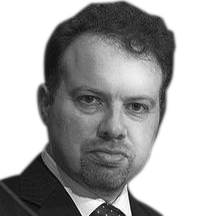
Adam Riess
There are so many ways to cope with the Big Four-O Crisis: one might run a marathon, buy a Harley-Davidson, or start pottering with organic clay, in order to be happy.
By the time Adam Riess, whose parents escaped Nazi Germany in 1936, reached 40, he had already discovered that the expansion of the universe is accelerating – and was awarded a Nobel Prize for this discovery. Odd guy.
In order to understand what “the expansion of the universe is accelerating” even means, let us go back some 14 billion years. mose scientists assume, that the universe was formed at a moment in which a factor – be it the big bang, the singular point or God – decided to start inflating the “time-space” balloon.
In 1928 the American scientist Edwin Hubble that the distances between galaxies throughout the balloon universe, including our very own milky way, are growing constantly. Riess’ discovered that the expansion is accelerating.
Hubble struggled for recognition his entire career, however at the time, the Nobel Prize in Physics did not recognize work done in astronomy. His work was only recognized after his death. In a way, Adam Riess’ Nobel Prize not only shed new light on the mystery of the universe, but also redressed the wrongs done to Hubble.
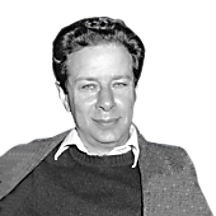
Altman Sidney
Sidney Altman was born in Montreal, Canada, in 1939.
In 1989, he was awarded the Nobel prize in chemistry “for discovering the catalytic nature of RNA.
Altman discovered that RNA and DNA do not only carry the genetic code, but have also the ability to start and control chemical reactions.
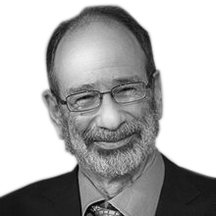
Alvin Roth
Upon being announced that he is to receive the 2012 Nobel Prize in economy, the first thing Alvin Roth chose to do, was to take a shower. Roth, whose friends refer to as having “a most unusual mind”, assumed that in the next couple of days the hustle around him won’t allow him to enjoy a relaxing shower. So he made a rational decision. Well, he should know. Prof. Alvin Roth is an expert in decision making, the games theory and markets studies.
He dropped from high school when he was 16, which probably did not make his parents very happy. However he sure made it up to them when, at the young age of 23, he received his doctorate from Princeton, and published his first book at 28.
Unlike many of his colleague scientists, Prof. Roth is not isolated in his ivory tower. He loves having people over, always surrounded with students and is best known for his large, attractive Passover Seder dinners.
Roth is an expert in balance between needs and wishes. His study is applied in various fields: a system that finds matches between donors and kidney patients; match making between hospitals and interns; match making for marriage, to name a few.
So does he have a secret to a happy marriage? If you are men – always make sure your wife is slightly happier than yourselves!
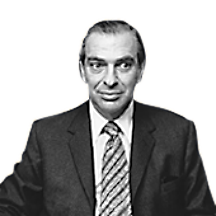
Arrow Kenneth
Kenneth Arrow was born in New-York in 1921. He was awarded the 1972 Nobel prize in economic sciences “for his pioneering contributions to general economic equilibrium theory and welfare theory”.
Arrow concentrated in his studies on the social implications of economical developments.
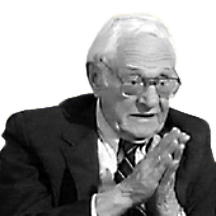
Axelrod Julius
Julius Axelrod was born in 1912 in New York. He went through a long and arduous process before obtaining his medical degree. When he first applied, he was not accepted to medical school and specialized in chemistry and pharmacology at New York University. He also engaged in researching the metabolism of drugs. At the age of 43, when he finally received his medical degree, he moved to the National Institute of Mental Health, and later served as head of the Pharmacology department.
In 1970, Julius Axelrod and his colleagues, Bernard Katz and Ulf Von Euler, were awarded the Nobel Prize in Physiology or Medicine “for their discoveries concerning transmitters and their operation mechanism”.
Nerve signals are transmitted in the body in two ways: by means of electric action potentials and by means of chemical substances – neurotransmitters.
In the early 1960’s, Axelrod and his colleagues researched the noradrenaline neurotransmitter, and discovered how transmitters are stored in nerve terminals, the mechanism of their discharge and manner of activity.
At a later stage, Axelrod also discovered two methods for stopping the activity of transmitters: the first by means of a specific enzyme that breaks it down, and the second by the quick re-absorption of the residuals of the neurotransmitter for storage, until the next stimulation.
Beyond his theoretical contribution to the understanding of nerve function, Julius Axelrod can be credited with furthering the practical applications of these theories in the treatment of mental illness and conditions such as high blood pressure.
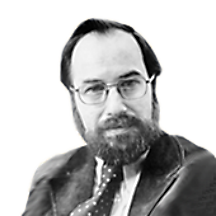
Baltimore David
David Baltimore was born in New-York in 1938. He studied at the Massachusetts Institute of Technology and the Rockefeller Institute where he received his doctorate. In 1965, Baltimore began research on the polio virus at the Salk Institute in California. While there, he discovered the way in which the virus replicates its genetic information found in the form of RNA.
In 1968, Baltimore moved to MIT and began studying other RNA viruses known to cause cancer in animals. He was surprised to find that they did not contain the enzyme necessary for their replication. According to the prevailing theory of the time, the transition from DNA to RNA is a one-way process. Baltimore found that with the aid of the enzyme “reverse transcriptase”, the viruses could change the process and build molecules of DNA on a RNA template.
Baltimore was awarded the 1975 Nobel prize for physiology and medicine, jointed with Renato Dulbecco and Howard Temin, “for their discoveries concerning the interaction between tumor viruses and the genetic material of the cell”. The work of the three researchers forged a link between two theories; the first claims that cancerous cells undergo genetic change due to mutation and the second holds that viruses can cause cancer.
The discovery of the “reverse transcriptase” accelerated the progress being made in the fields of molecular biology and genetic engineering, thus expanding an understanding of the replicating mechanism of retroviruses, including the AIDS virus.
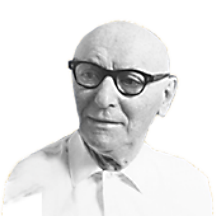
Bashevis-Singer Isaac
Isaac Bashevis Singer was born in 1904 into a rabbinic family in the town of Radzymin, Poland. He learned in a “cheder” and “yeshiva” before studying in the “Tachkemoni” seminar in Warsaw. From 1923 until 1933, he worked as a translator and proofreader for the Polish Yiddish periodical, “Literarishe Bleter”.
In 1935, Singer emigrated to the United States where he wrote literary criticism, essays, books and stories and made a name for himself in Yiddish literary circles. Among his most famous works are “The Family Moskat” and “The Magician of Lublin”.
Isaac Bashevis Singer was awarded the Nobel Prize for literature in 1978 “for his impassioned narrative art, which, with roots in a Polish Jewish cultural tradition, brings universal human conditions to life.”
In his books, Bashevis-Singer portrayed the life of Jews in Poland after the 1648-49 massacres and Jewish life in Warsaw before the holocaust. Some of his books and stories have been adapted for films and television.
Bashevis-Singer was a master storyteller, who drew his readers into a magical world of ghosts and spirits, temptations and desires, dreams and secret passions. He portrayed the provocative and unconventional aspects of life in the small Jewish town, the “shtettel”.
When he was asked why he continued to write in a so-called dead language, he replied, “I am sure that millions of Yiddish-speaking corpses will rise from their graves one day, and their first question will be: Is there any new book in Yiddish to read?
Isaac Bashevis Singer passed away in 1991.
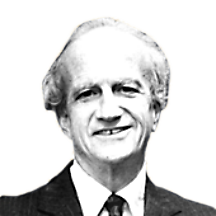
Becker Gary
Gary Becker was born in 1930 in Pennsylvania, USA. He studied economics at Princeton and Chicago universities.
Becker’s rigorous economic reasoning reveal the rational component involved in complex human behavior; by doing so, he has altered the understanding of human action in diverse areas such as discrimination, marriage, crime or drugs addiction.
In 1992, Gary Becker was awarded the Nobel prize in economics “for having extended the domain of microeconomic analysis to a wide range of human behavior and interaction, including non-market behavior”. Becker’s work has had a significant theoretical and practical impact in social sciences, especially sociology, criminology and demography.
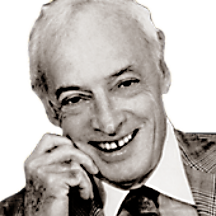
Bellow Saul
Saul Bellow was born in 1915 in Lachine, Quebec , Canada. At the age of nine, he moved with his parents to Chicago, there he studied sociology and anthropology. He lectured on English literature in Princeton and New-York Universities and was a professor at the University of Minnesota.
Saul Bellow received the 1976 Nobel prize in literature “for the human understanding and subtle analysis of contemporary culture that are combined in his work.” The Nobel committee cited his book Seize the Day published in 1956, as one of the classical creations of our time.
Bellow’s first book, Dangling Man, was written in 1944. Since then he published many more, among them the Adventures of Augie March, Herzog, and Seize the Day.
Saul Bellow is one of the most important contemporary American writers. His literary contribution was rewarded in many grants and honors, among them the National Book Award as well as the prestigious Pulitzer prize.
In his novels, he has created a unique and original American style that ranges from storytelling in everyday language to complex intellectual analysis.
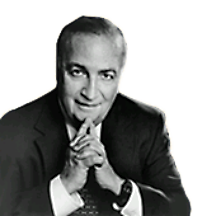
Benacerraf Baruj
Baruj Benacerraf was born at Caracas, Venezuela in 1920. He begins his autobiography with these words:
“I have a strong feeling of identity with my cultural heritage, which may have molded much of my personality. I am of Spanish-Jewish, Sephardic, ancestry. My father, Abraham, was born in Tetuan, Morocco, when it was a Spanish colony, sometime in the last century… My father’s family, as well as my maternal ancestors, who also originated from Tetuan before they move to Sidi-Bel-Abbes in French Algeria, lived in Tetuan, probably for centuries after they moved across the channel from Spain at the time of the Spanish Inquisition… “Money lender”, a traditional family profession… may explain the true meaning of our name. ‘Ben’ means ‘son’ in both Hebrew and Arabic and ‘Seraph’ is, indeed, the word for money changer in Arabic. As for myself, I prefer the fantasy that the real root of my name is the Hebrew word ‘Seraphim’… my full name in Hebrew means, therefore, “be blessed, son of the angel”.
His parents emigrated to Venezuela where his father prospered in a family import-export business. By the time Baruj reached his 5th birthday, they moved to Paris where he lived and studied until completing high school. On the eve of World War 2, his father who had sensed the coming danger decided to emigrate to the USA. There Baruj Benacerraf graduated in the University Columbia and the Medical College of Virginia, in Richmond and became an American citizen. On March 1943, he married Annette Dreyfus, a Jewish girl from a family who fled from Germany at the beginning of the war.
The story that began more than forty years ago with the identification of the first transplantation antigen in a mouse, culminated in 1980, in the award of the Nobel Prize in Physiology or Medicine to three immunologists, Baruj Benacerraf, Jean Dausset and George Snell “for their discoveries concerning genetically determined structures on the cell surface that regulate immunoligical reactions”.
They identified and observed the function of histocompatibility antigens. These antigens induce the immune system to reject a transplant. Their discovery led to the matching of transplant tissues between donor and recipient to minimize the extent of rejection of the transplanted tissue by the immune system of the recipient. Although the use of histocompatibility antigens for transplants is very important, it is unnecessary for most of the population. If such is the case, what role do these antigens play in our daily lives? This subject has been researched by Baruj Benacerraf who showed that the genes of the major histocompatibility complex (MHC) regulate the mutual relationship between the cells of the immune system required to produce an immune reaction.
At the outset of the investigation, Benacerraf showed that guinea pigs have genes known as Ir (immune response) genes that allow them to produce antibodies in reaction to certain antigens. Subsequently, Hugh McDevitt of Stanford University and Michael Sela of the Weizmann Institute of Science discovered similar genes in mice. McDevitt showed that these genes are located in the genome of the mouse in chromosome 17 in the MHC region in the H-2 gene complex, known as IR. In the HLA complex in man (similar to the H-2 in mice) the IR genes are located in chromosome 6 in the HLA-D region.
In conjunction with David Katz, Benacerraf demonstrated that T and B lymphocytes cooperate to produce antibodies against an antigen only if they have identical genes located in the H-21 region of their MHC. Later, it was seen that helper T cells, B cells, macrophages and antigen-presenting cells all cooperate to produce an immunological reaction to a foreign antigen only if they have identical H-21 genes.
According to Benacerraf, regulating immune system reactions is a complicated affair. The only system similar to it in complexity is the nervous system. However, he feels that we are beginning to understand the mechanism by which the immune system can distinguish between a self-antigen and a foreign antigen.
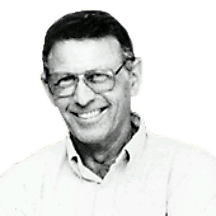
Berg Paul
Paul Berg was born in 1926 in New-York.
He received the 1980 Nobel prize in chemistry “for his fundamental studies of the biochemistry of nucleic acids”, including the first recombination of genes.
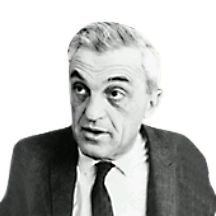
Bloch Felix
Felix Bloch was born in Switzerland in 1905. In 1933 he immigrated to the United States of America.
Felix Bloch received the 1952 Nobel prize in physics for the precise measurement method he developed, which makes it possible to identify materials without damaging them. This method is applied in techniques such as computerized axial tomography.
Felix Bloch passed away in 1983.
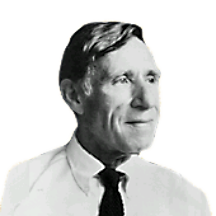
Bloch Konrad
Konrad Bloch was born in 1912 in Neisse, Germany. In 1934, he completed his studies at the Munich Technische Hochschule. After Hitler came to power in Germany, Bloch fled to Switzerland, and from there he moved to the United States. In 1938, he received his doctorate degree from Columbia University. Bloch served as a professor at the University of Chicago and at Harvard University.
In 1964, Konrad Bloch was awarded the Nobel Prize in Physiology or Medicine “for discoveries concerning the structure and regulation of cholesterol”.
In his research, Bloch determined the complex process by which the body produces cholesterol from acetic acid. His discoveries are of significant practical importance in developing efficient treatment for diseases such as arteriosclerosis that are related to the mechanisms that control levels of cholesterol in the blood.
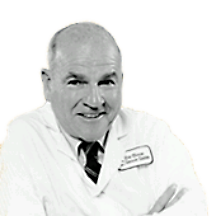
Blumberg Baruch
Baruch Blumberg was born in New-York in 1925. His training as a physician and anthropologist enabled him to undertake a comparative study on the spread of diseases among various populations in the world.
During the course of his study, he discovered a method for identifying the Hepatitis B virus. This, in turn, made it possible for the public health system to combat one of the world’s most widespread and virulent infectious diseases.
Blumberg’s technique is used by blood banks to check donor blood for the Hepatitis B virus, thereby helping to prevent further contamination.
After identifying the virus, Blumberg went on to develop a vaccine against it, and demonstrated its relation to hepatic cancer.
In 1976, Baruch Blumberg received the Nobel prize in physiology or medicine for his contribution to the study of infectious diseases.
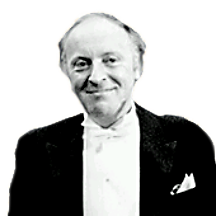
Brodsky Joseph
Joseph Brodsky was born in Leningrad in 1940. Although he was considered one of the most promising soviet poets, he was not allowed to publish his poems until 1970 and had to do so underground.
In 1972, Brodsky immigrated to the United States of America and in 1987, he received the Nobel prize in literature “for his all-embracing authorship, which is imbued with clarity of thought and poetic intensity.”
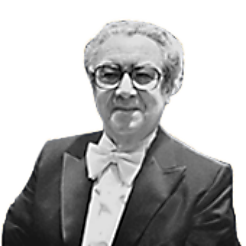
Brown Herbert
Herbert Brown was born in London, in 1912 and since early childhood had to provide for his poor family. That did not stop him from succesfully completing his education.
In 1979 Herbert Brown received the Nobel prize in chemistry “for developing the use of boron in organic synthesis.”
Brown’s methods are used worldwide as basic procedures in laboratory work.
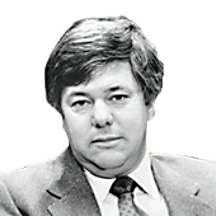
Brown Michael
Michael Brown was born in New York in 1941. In 1966, he received his Medical Doctorate from the University of Pennsylvania, and in 1971 he joined the staff of the Dallas University School of Medicine, there he began his collaboration with Joseph Goldstein. In 1977, as a professor of genetics, he was appointed director of the Center for Genetic Diseases.
Brown and Goldstein received the 1985 Nobel prize in Physiology or medicine, “For their discoveries concerning the regulation of cholesterol metabolism, and for their research on the genetic disease that prevent it.”
The two scientists discovered the mechanism that transfers cholesterol from the blood into the cells, and which, at the same time, keeps the correct level of cholesterol in the blood, preventing it from accumulating on the walls of the arteries and disturbing the blood flow.
This mechanism operates by receptors, molecules on the outer surface of the cells, which “hunt” the cholesterol in the blood and transfer it into the cell, for various uses.
Brown and Goldstein’s findings show that insufficient amount of these receptors, due to a genetic defect or to inappropriate, high-cholesterol diet, disturbs the mechanism and causes atherosclerosis, strokes and heart attacks. This discovery urged them to look for medications that will encourage the activity of the receptors mechanism and prevent the blocking of the arteries.
If those medications are proven to be safe over a long period of time, maybe one day we will be able to eat a nice juicy steak and still live to enjoy it.
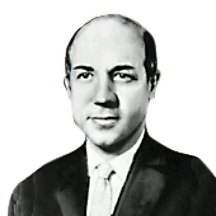
Calvin Melvin
Melvin Calvin was born in the United States of America in 1911.
Melvin Calvin received the 1961 Nobel prize in chemistry, “for his research on the carbon dioxide assimilation in plants,” in which he detailed the chemical reactions participating in the process of photosynthesis.
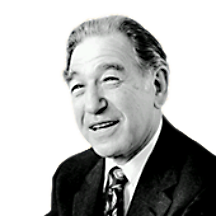
Cohen Stanley
Stanley Cohen was born in New York in 1922. At the age of 26, he received his doctorate in chemistry from the University of Michigan. He worked at the University of Colorado and in 1953 moved to Washington University in St. Louis where he undertook cancer research with Rita-Levi Montalcini. Cohen has been a professor of chemistry at Vanderbilt University since 1959.
How does man grow from a single fertilized cell into a complex arrangement of billions of cells each with its own unique function and working together in perfect synchronization? Part of the answer lies in the family of proteins known as growth factors which were first discovered by Stanley Cohen and Levi-Montalcini in the l950’s.
In awarding the 1986 Nobel Prize for medicine and physiology to Stanley Cohen and Rita Levi-Montalcini, the prize committee noted that their work was of fundamental importance in making it possible to understand the mechanisms which regulate cell and organ growth.
Stanley Cohen successfully isolated the nerve growth factor NGF from the salivary glands of rats and even devoloped antibodies against it. In 1962 he succeeded in isolating an additional, epidermal growth factor – EGF.
The very existence of growth factors was questionable prior to the research of Stanley Cohen and Rita Levi-Montalcini. Today scientists are convinced that they exist and recognize their great importance.

Cori Gerty
Gerty Cori was born in Prague in 1896. In 1920, she received her medical degree at the University of Prague, and then moved to Vienna with her husband, Carl. Shortly thereafter, the Coris settled in the United States and began work at Washington University in St. Louis. They undertook research there on the metabolism of carbohydrates, especially glucose and glycogen.
In 1947, Gerty and Carl Cori were awarded the Nobel Prize in Physiology or medicine “for their discovery of the course of the catalytic conversion of glycogen”.
Glycogen is composed of interconnected glucose molecules. A cyclical process occurs in the body whereby the glucose is converted into glycogen and stored there for future use. When required, glycogen is once again converted into glucose and used to provide energy to the cells of the body.
In 1944, the Coris succeeded in synthesizing glycogen in the laboratory. This confirmed their hypothesis regarding its method of production in the body.
During her last years, Gerty Cori suffered from a serious illness that led to her death in 1957.
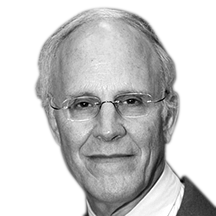
David Gross
David Gross was fascinated by the mysterious world of physics since childhood. He was enchanted by the evolution of riddles, and how from cracking one riddle, yet another one emerges.
When he received his doctorate degree from Harvard University, he was challenged with the following riddle: I am whimsical, no one has ever seen me but I am the origin of existence – and I am not God. Gross knew that the answer is a small mischievous being whose name is taken from James Joyce’s “Finnegans Wake”.
The Quark
Quark is one of the ancestors of the world of particles. Until now it was only seen in groups. It belongs to the family of “elementary particles” – the fundamental particles of matter known in physics today.
Until the discovery of the Quark, it was commonly believed that the atom’s nucleus consists only of protons and neutrons. However, this is the riddle: protons carry positive charge and therefore reject one another. Why then doesn’t the nucleus come apart? Well, it does not.
Physicists assumed that yet another anonymous force in involved within the nucleus, a force that attaches protons and neutrons to each other in spite of the electric rejection. this force is the quark.
Prof. Gross was born to a Jewish family that immigrated from Austro-Hungary and settled in the U.S.A. He discovered the “Strong interaction” and led a scientific breakthrough which contributed to the formulation of a comprehensive theory which may explain all natural phenomena. For this achievement he was awarded the Nobel Prize in physics in 2004.
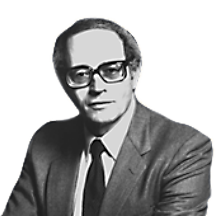
Edelman Gerald
Gerald Edelman was born in 1929 in New York. In his youth, he considered becoming a professional violinist, but eventually turned to a career in medicine. He received his Medical degree at Pennsylvania University and specialized in the study of the body immunization system. In 1960, at the Rockefeller Institute, he received his Ph.D. for his research on the structure of antibodies.
In 1927, Gerald Edelman and his British colleague, Rodney Porter, were awarded the Nobel Prize in Physiology or Medicine “for their discoveries concerning the chemical structure of antibodies”.
The antibody is a protein, produced by the body in reaction to an antigen, a harmful substance that attacks the body. The function of the antibody, working with various components of the immune system, is to neutralize the effect of the attacking antigen.
Edelman and his team initially succeeded in determining the basic structure of the antibody. In 1969, they deciphered the biochemical structure of the antibody molecule and discovered how the antibody is attached to the antigen.
Edelman’s pioneering work opened up a whole range of study in the field of immunology and led to new insight into genetic and cancer research.
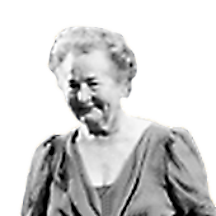
Elion Gertrud
Gertrud Elion was born in New-York in 1918. She received the 1988 Nobel prize in physiology or medicine, together with James Black and George Hitchings, “For their discoveries of important principles for drug treatment.”
Elion applied her knowledge of DNA synthesis in the cell to the production of drugs for leukemia and malaria as well as a medicine that facilitates organ transplants.
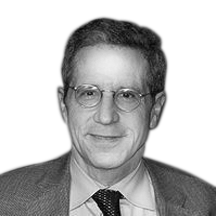
Eric Maskin
The Jewish past stories are full of famous heretics, Baruch Spinoza being the best known. However, Jewish heretics live among us today! If you don’t believe it, read about Prof. Eric Maskin.
Maskin is a Jewish economist who taught in Princeton and lived in the house of Albert Einstein until 1955. He is scared of nothing, not even defying God.
Most people are misled to believe that to be religious is to believe in some Metaphysical grumpy entity with a long tangled beard, who is just waiting to send you to hell if you mixed some cheese into your burger. But the truth is, that religion’s basic definition is absolute faith in a superhuman order.
take for example the omnipotent God of capitalism – the free market. an adherent capitalist believes that no one and nothing may intervene in the free market – not even the government. Maskin, however, asserts the opposite – not only the government may intervene – in some cases it must do so. According to Maskin, the free market is indeed strong, but does not have divine powers. his models proved that totally free, unrestrained market lead to extreme inequality and enormous gaps between the rich and the poor. Governmental intervention is therefore essential to reduce damages.
however, unlike Spinoza, who was excommunicated by the 17th century Jewish community of Amsterdam, Maskin gained respect and recognition worldwide, and won the 2007 Nobel Prize in economy. It’s not enough to be a genius – you also need to choose to nice era to be born at.
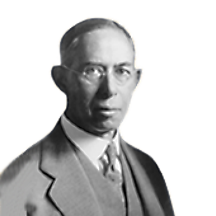
Erlanger Joseph
Joseph Erlanger was born in 1874 in St. Francisco. In 1899, he was qualified at Johns Hopkins University to practice medicine and engaged in the research of blood pressure. Later on, he headed the Physiology Department at the Schools of Medicine of Wisconsin and Washington Universities.
In 1944, Joseph Erlanger and his colleague, Herbert Gasser, were jointly awarded the Nobel Prize in Medicine and Physiology “for their discoveries relating to the highly differentiated functions of single nerve fibers”.
Erlanger and Gasser were the first to succeed in performing a detailed measurement of the action potential of a signal nerve cell, by means of an oscilloscope device built by them from a cathode ray tube and an amplified.
Their measurements exposed 3 main types of nerve fibers, and also that the velocity of the electrical current varies according to a direct relation with the width of the fiber. Inasmuch as the fiber is wider, the velocity is increased.
The experiments conducted by Erlanger and Gasser as from 1921 served as a basis to the modern knowledge on action potentials in nerves and were very important in the understanding of various functions of nerve tissues.
Joseph Erlanger died in 1965.
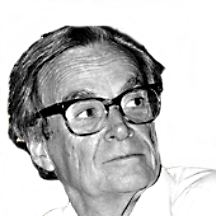
Feynman Richard
Richard Feynman was born in New York in 1918. He studied physics at the Massachusetts Institute of Technology. In 1942 he was awarded a doctorate from Princeton University and joined the team of scientists engaged in the development of the atomic bomb at Los Alamos. He taught at Cornell University and the California Institute of Technology and in 1954 He was elected to the American Academy of Science.
In 1965, Richard Feynman was awarded the Nobel prize in physics, together with Julian Schwinger and Sin-Itiro Tomonaga, for the development of a quantum electrodynamics theory.
In classical physics, electrodynamics was an established theory, but in the modern quantum physics, difficulties were encountered in its development until the turning point discovered by Feynman was reached.
Feynman’s calculative approach, with the help of which he succeeded in constructing the quantum electrodynamics theory, holds that in order to calculate the likelihood of a particle moving from a certain initial position to a certain final position, the probabilities must be calculated for every possible path separately, and the probabilities of all possible paths must be summarized. This method is known as “Feynman’s integrals”. He described the various paths with the help of the famous “Feynman’s diagrams” which simplified comprehension of the abstract processes and enabled, with the help of calculations he determined, the explanation of phenomenon that did not fit in with earlier calculations of the quantum theory.
Apart from being a brilliant scholar, Feynman was also famous for his talents as a drummer and for his special sense of humor. When he was working in Los Alamos, he would break into the safes in which top-secret material was kept and leave a note for the security officers with the message, “Guess who did it?” His books are written in a light style and with a great deal of humor, and achieved wide popularity.
Richard Feynman died in 1988.
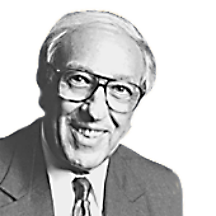
Fischer Edmond
Edmond Fischer was born in 1920 at Shanghai, China, and arrived to Switzerland at the age of 7. He studied chemistry and biology at Geneva and presented his doctoral thesis in 1947. In 1953 he joined the laboratory of Gerty and Carl Cori, at the University of Washington Seattle. There, he started his long scientific collaboration with Edwin Krebs.
In 1992, Edmond Fischer was awarded the Nobel prize for physiology and medicine, together with Edwin Krebs, “for their discoveries concerning reversible protein phosphorylation as a biological regulatory mechanism”.
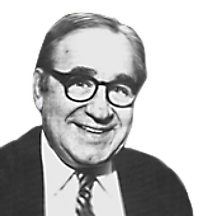
Fogel Robert
Robert Fogel was born in 1922 in New-York. He received his Ph.D from Johns Hopkins University in 1963. He taught, most of his years, in the University of Chicago.
In 1993, Robert Fogel was awarded the Nobel prize in Economics, jointly with Douglas North “for having renewed research in economic history by applying economic theory and quantitative methods in order to explain economic and institutional changes”.
His most controversial research addressed the economic aspect of slavery. His conclusion, after a very precise and comprehensive analysis, was that slavery was ended not because it became inefficient but because it was morally repugnant to the American public opinion.
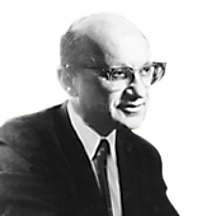
Friedman Jerome
Jerome Friedman was born in Chicago in 1930. In his youth he was inclined towards the arts, especially painting, but after he read Albert Einstein’s book “Relativity”, he began to take an interest in physics, studied at the University of Chicago, and in 1956 received his Ph.D. from 1960 he served as a professor at the Massachusetts Institute of Technology, his research focusing on particle physics.
Jerome Friedman and his research partners, Henry Kendal and Richard Taylor, were awarded the 1990 Nobel prize in Physics “For their pioneering investigations concerning deep inelastic scattering of electrons on protons and bound neutrons, which have been of essential importance for the development of the quark model in particle physics.”
Following the research of Ernest Rutherford, who first discovered the atom nucleus at the beginning of the 20th Century, great scientific effort was made to identify the building blocks of matter. Protons, electrons and neutrons were discovered, and later on more elementary particles.
The theoreticians Gell-mann and Zweig postulated a model in which each hadron, such as the proton and the neutron, is composed of triplets of particles called quarks. Friedman and his colleagues verified that model by observations they made on the internal structure of those particles, which make up the atom’s nucleus.
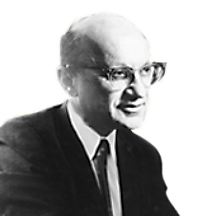
Friedman Milton
Milton Friedman was born in the United States of America in 1912.
He received the 1976 Nobel prize in the economic sciences, “for his achievements in the fields of consumption analysis, monetary history and theory and for his demonstration of the complexity of stabilization policy.”
Friedman believes that a free market, operating without government intervention, is necessary for constant economic growth. “The individual’s will to succeed,” he said, “is the engine of American capitalism.”
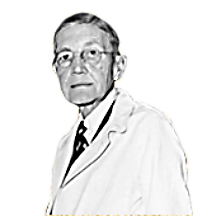
Gasser Herbert
Herbert Gasser was born in 1888 in Wisconsin, USA. He received his medical degree in 1915 from Johns Hopkins University and was professor of pharmacology and physiology at Washington and Cornell Universities. From 1935, he directed the Rockefeller Institute of Medical Research.
In 1944, Herbert Gasser and his colleague Joseph Erlanger were jointly awarded the Nobel prize in Physiology and Medicine “For their discoveries, relating to the highly differentiated functions of single nerve fibers.”
Gasser and Erlanger were the first to succeed in performing a detailed measurement of the action-potential of a single nerve cell, using an amplified oscilloscope that they built.
Their measurements revealed three types of nerve fibers, as well as a direct relation between the fiber’s thickness and the speed of the electrical signal passing along it. Inasmuch as the fiber is wider, the velocity is increased.
Gasser and Erlanger’s experiments formed the cornerstone of modern knowledge on neural action potentials and were vital to our understanding of the different functions of the nerve system.
Herbert Gasser passed away in 1963.
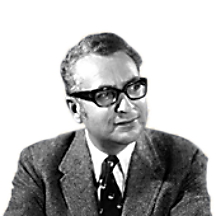
Gell-Mann Murray
Murray Gell-Mann was born in 1929 in New York. He received his PH.D. degree in Physics in 1951 from the Massachusetts Institute of Technology (M.I.T). In 1951, he transferred to the California Institute of Technology, where he engaged in the research of elementary particles.
In 1969, Gell-Mann was awarded the Nobel Prize in Physics “for his contributions and discoveries concerning the classification of elementary particles and their interactions”.
During the 1950’s, along with the development of particle accelerators, more elementary particles were discovered. In 1961, Gell-Mann proposed a classification system that can organize the numerous particles into categories, thereby introducing an order to the sub-atomic world.
His revolutionary achievement was his hypothesis regarding the existence of quarks, the foundation elements comprising all the elementary particles that are affected by strong interactions, such as proton and neutron. Furthermore, Gell-Mann postulated the existence of gluons, particles that supposedly bind the quarks together.
For these achievements, Gell-Man is considered one of the greatest physicists of our time.
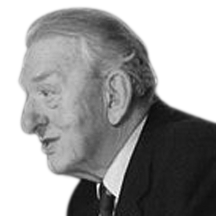
George Olah
Prof. George Olah’s research terminology includes “carbocations” and “superacids”, terms that in order to fully understand you literally need to spend a life time in a lab.
Let us, then, convert these terms to easy words any layman can relate to: fuel substitute. In other words – “Methanol Economy”.
Methanol is the simplest alcohol, that can be produced from sugar canes, corn or wood. It’s main advantage is being an alternative for oil as an energy source for transportation. It is also environment-friendly, unlike gasoline and diesel that emit carbon dioxide into the atmosphere, thus increase the greenhouse effect and the danger of turning the entire planet into a gigantic hot tanning booth.
George Olah, a Hungarian Jew who was born in 1927 in Budapest, managed to cross the iron curtain in 1956 and came to the United States. Moving from cold communist Hungary to warm liberal California must have agreed with him, for he became one of the most prolific scientists of our time. He registered 120 patents, published 1,400 academic articles, over 20 books, including one on the “Methanol Economy”, won dozens of prestigious awards, 15 honoris causa degrees, and in 1994 – the Nobel Prize in economics.
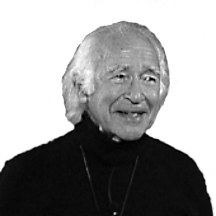
George Wald
George Wald was born in 1906 in New-York.
He received the 1967 Nobel prize in physiology or medicine for his research on the pigments of the retina, that change their spatial form when exposed to light, thus triggering a receptor, which sends a nerve signal to the brain.
This research, together with his studies on the color receptors, gave us deep insight into the way we see.
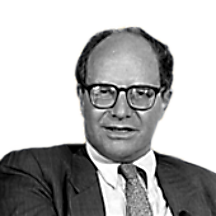
Gilbert Walter
Walter Gilbert was born in 1932 in Boston.
He received, together with Frederic Sanger, the 1980 Nobel prize in chemistry “for their contributions concerning the determination of base sequences in nucleic acids”.
Gilbert’s achievements made possible the diagnosis and prevention of hereditary diseases.
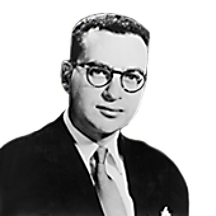
Glaser Donald
Donald Glaser was born in 1926 in Cleveland, U.S.A. During his youth he showed great musical promise, but chose to focus on the sciences. In 1950 he received a Ph.D. in physics and mathematics from the California Institute of Technology. In 1953 Glaser joined the staff of the University of Michigan and in 1957 became a full professor. In 1959 he moved to the University of California.
Donald Glaser was awarded the 1960 Nobel prize in Physics for the invention of the bubble chamber, which is used to detect and measure the course of elementary particles.
Glaser’s invention solved a difficult problem that faced particle physics researchers, who needed a suitable detector for the new generation of powerful particle accelerators. The “Cloud Chamber”, which had served this purpose in the past, was no longer suitable for the high velocities and enormous energies that these accelerators produced.
Glaser claimed that the idea for the development of the Bubble Chamber came to him when he was looking at a foaming beer bottle. He built a cell containing liquid under pressure, at a temperature only slightly lower than its boiling temperature. Energetic particles that pass through the liquid cause it to boil and leave behind them a trail of bubbles, which can then be photographed and measured.
His invention enabled experimental physicists to continue exploring the sub-atomic world.
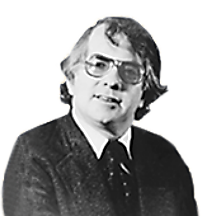
Glashow Sheldon
Sheldon Glashow was born in New York in 1932. He studied physics at Cornell University and at Harvard University, where he obtained his Ph.D. in 1959. Subsequently, Glashow was appointed Head of the Harvard University Physics Department.
In 1979, Glashow was awarded the Nobel Prize in Physics together with Weinberg and Abdus-Salam “for their contribution to the theory of the unified weak and electromagnetic interaction between elementary particles including, inter alia, the prediction of the weak neutral current”.
Glashow had many achievements in the field of elementary particles, but the Nobel Prize was awarded to him for what was considered his most outstanding contribution: the unification of the weak interaction and the electromagnetic interaction. Until this discovery, physics described the universe by means of four forces: gravitation, electromagnetic interactions, strong interactions and weak interactions. Glashow showed that the weak and the electromagnetic interactions are different aspects of the same whole.
It can thus be said that Glashow brought physics a step closer to its ultimate goal – a Unified theory of all forces acting in nature.
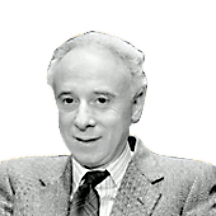
Goldstein Joseph
Joseph Goldstein was born in South-Carolina in 1940. In 1966 he received his medical doctorate in the university of Dallas, Texas. In 1971 he began researching the cholesterol metabolism together with Michael Brown at the university’s medical school. In later years he has done research on biochemical genetics at the National Institution of Health in Maryland.
Goldstein and Brown received the 1985 Nobel prize in Physiology or medicine, “For their discoveries concerning the regulation of cholesterol metabolism,” and for their research on the genetic disease that prevent it.
The two scientists discovered the mechanism that transfers cholesterol from the blood into the cells, and which, at the same time, keeps the correct level of cholesterol in the blood, preventing it from accumulating on the walls of the arteries and disturbing the blood flow.
This mechanism operates by receptors, molecules on the outer surface of the cells, which “hunt” the cholesterol in the blood and transfer it into the cell for various uses.
Goldstein and Brown’s findings show that insufficient amount of these receptors, due to a genetic defect or to inappropriate, high-cholesterol diet, disturbs the mechanism and causes atherosclerosis, strokes and heart attacks. This discovery urged them to look for medications that will encourage the activity of the receptors mechanism and prevent the blocking of the arteries.
If those medications are proven to be safe over a long period of time,.maybe one day we will be able to eat a nice juicy steak and still live to enjoy it.
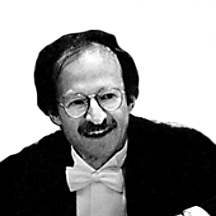
Harold VARMUS
Harold Varmus was born in 1933 in Long-Island, USA. He studied at the University of California, at San-Francisco where he became professor of biochemistry and biophysics in 1982.
In 1989, the Nobel prize in physiology and medicine was awarded to Harold Varmus and Michael Bishop “for their discovery of the cellular origin of retroviral oncogenes”.
Varmus conducted his research on the cancerous factor sarcoma (RSV) and found a gene that causes cancer. Surprisingly, he discovered the presence of this gene in the genome of healthy birds and mammals.
Varmus concluded that the active gene, in the oncogene virus, comes from cellular genes whose normal function is to control cell growth, division and differentiation. At some point of its evolution, the RSV virus extracts a gene from the host genome and inserts it into its own genome. Thus, this cellular gene undergoes changes that allow it to convert an infect cell into a cancerous cell.
Further study revealed that this cellular gene can be transformed into an oncogene even without viral contact and prevent the cell from going through normal differentiation.
Since the discovery of Varmus and Bishop in 1976, more than 50 cellular genes with the potential to become oncogenes have been identified.
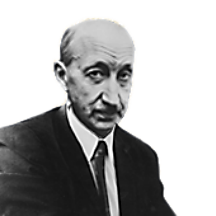
Hevesy George Von
George Von Hevesy was born in 1885 in Hungary. He studied at the universities of Budapest and Freiburg and earned a doctorate at the age of 23. In 1911, he moved to Manchester University, where he conducted research on isotopes. After returning to Budapest University, he was appointed professor, but was dismissed shortly thereafter because he was a Jew. He then moved to Denmark and worked in the Niels Bohr Institute and eventually settled in Sweden.
George Von Hevesy was awarded the 1943 Nobel Prize in Chemistry “for his work on the use of isotopes as tracers in the study of chemical processes”.
His paper on radioactive labeling and tracing forms the basis of all radioactive isotopic tracer techniques used in biology, metallurgy, medicine and analytical chemistry. In 1922, he discovered the element Hafnium, which provided one of the first pieces of supporting evidence for the modern theory of atomic structure.
Von Hevesy also developed an analytical technique using accelerated neutrons, which became the most important and precise method available for determining the purity of substances.
George Von Hevesy passed away in 1966.
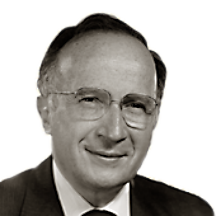
Hoffmann Roald
Roald Hoffmann was born in Zloczow, Poland, in 1937. His father was killed during the Second World War, and he and his family became refugees, moving from one displaced person camp to another until 1949, when they eventually settled in the United States.
These are the words of Hoffmann, the Holocaust survivor, the scientist and the poet describing his youth: “The man for whom everything came easy came from an immigrant family and didn’t own a book until he was 16.”
Hoffmann studied chemistry at Columbia University, then at Harvard where he received his doctorate in 1962. He moved to Cornell University in 1965. His field of research dealt with the reactions between atoms and molecules, but he also became interested in philosophy, art and symbolism.
Roald Hoffmann was awarded the Nobel Prize in Chemistry in 1981 for his part in what became known as the Woodward-Hoffmann Rules. These rules provide a rational explanation for much of what occurs in organic chemistry. They make it possible to predict which chemical reactions can take place easily and which are impossible to achieve.
Hoffmann wrote in one of his books: “In the Jewish tradition from which I stem, there is a concept called ‘TIKUN OLAM’, which means that whatever is done by man can be changed. We are compelled by our nature to create, but we can choose to fashion the world according to the good or according to the evil that is within us.”
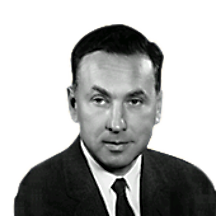
Hofstadter Robert
Robert Hofstadter was born in New York in 1915. He completed his studies in physics and mathematics cum laude in 1935, and was awarded his doctorate from Princeton University in 1938. In World War Two, he was engaged in weapons development. In 1950 he was appointed professor of physics at Stanford University and moved into the field of nuclear physics.
Robert Hofstadter was awarded the Nobel prize for physics in 1961, “for his pioneering studies of electron scattering in atomic nuclei and for his thereby achieved discoveries concerning the structure of the nucleons.”
A very powerful electron accelerator, the construction of which had by then been completed at Stanford, helped Hofstadter in his research and enabled him to make some important discoveries in atomic research. He succeeded in measuring the volume, form and density of atomic nuclei, and discovered that the density of the atom was more or less uniform over its entire volume. When he studied the components of the atom, he discovered that the proton and neutron were almost completely identical, except for the proton being positively charged, while the neutron is neutral.
Robert Hofstadter’s discoveries brought about changes in the accepted structure of the atom and advanced research on the forces active within it.
Robert Hofstadter died in 1990.
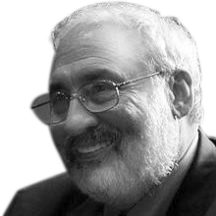
Joseph Stiglitz
Adam Smith’s “The Wealth of Nations” was published in 1776 and challenged the era’s conventions about economy. His main thesis was that should individuals will act purely on self-interest, general wealth will prosper. This fundamental metaphor in Smith’s work is called “the invisible hand”.
For over two centuries this was the basic economic theory, notwithstanding the opposing socialist theory by Karl Max. Then, in the 20th century, Joseph Stiglitz came along and dared to challenge Smith’s approach. Stiglitz asserted that Smith’s economic theory fitted the 18th century, but certainly not modern economy.
These are Stiglitz’s main arguments:
In order for the invisible hand principle to work, a full disclosure of information is needed from both side of each deal, selling or buying. However as modern economy is growing more information based, it is more likely for an a symmetry regarding the amount of information at the hands of each side. For example, the car seller might know that the car is damaged and not reveal this knowledge to the potential buyer. The flat owner may not share it with the tenant that the neighbors are loud musicians, inspired during wee hours only. Surely, you get the picture.
Already at the age of 27, Stiglitz received his prestigious doctorate from Yale. He developed economic models and theories that aimed at solving the information a-symmetry problem, and was awarded a Nobel Prize in economy in 2010. His work contributed to the reduction of wage gaps, raising minimum wage, increasing government intervention and reducing globalization.
Stiglitz also predicted the great financial crisis of 2008.
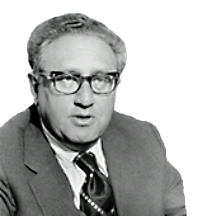
Kissinger Henry Alfred
Henry Kissinger was born in Fuerth, Germany, in 1923 and emigrated to the United States with his family when he was fifteen. He was awarded the Nobel peace prize in 1973, together with the Vietnamese Le Duc Tho, “for his efforts in achieving a peace treaty between South and North Vietnam.”
Kissinger, who was advisor to American presidents Kennedy and Johnson, and Secretary of State in the Nixon and Ford administrations, contributed to the thawing of relations between the Great Powers at the height of the Cold War, and played a role in the reestablishment of diplomatic relations between the United States and China.
In 1974-1975, Kissinger worked unceasingly to open the Middle East peace process. His `shuttle diplomacy’ between the region’s capitals led to the disengagement of forces after the Yom Kippur War and brought about the interim agreements between Egypt and Israel, which later contributed to the signing of a full peace treaty between the two countries.
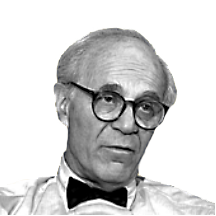
Klein Lawrence
Lawrence Klein was born in 1920 in the United States of America.
He received the 1980 Nobel prize in economic sciences “For the creation of econometric models and for their application to the analysis of economic fluctuations and policies.”
Klein supported, in theory and practice, the combination of government intervention and the act of the individual free will.
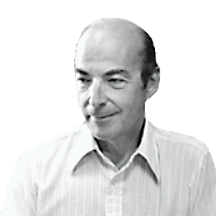
Kornberg Arthur
Arthur Kornberg was born in 1918 in Brooklyn. In 1941 he received his medical degree from Rochester University and later became the head of the microbiology department at Washington University Medical School. From 1959 he was director of the Biochemistry Department at Stanford Medical School.
Arthur Kornberg was awarded the 1959 Nobel prize in physiology or medicine, together with Severo Ochoa, for discovery of the biochemical mechanism that is responsible for the replication and synthesis of nucleic acids.
Kornberg succeeded in creating synthetic DNA molecules for research purposes with the chemical and physical characteristics of natural DNA. However, many years passed before he and his team produced synthetic DNA molecules that were biologically active as well.
He claimed that by studying the action of DNA in bacteria we can understand the complex mechanism and the important activity of human DNA. These studies can contribute to the understanding of human development, cancer and genetic diseases.
Kornberg was once quoted as saying: “I never believed that during my lifetime I would see Genetics, Immunology and Medicine working together and using one chemical language in their attempt to gain a better understanding of life.”
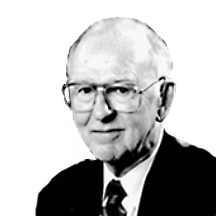
Krebs Edwin
Edwin Krebs was born in 1918 in Lansing Iowa, United States. He studied chemistry at the University of Illinois, and obtained his Medical Degree from the Washington University Saint-Louis in 1943.
Krebs worked for many years at the University of Washington Seattle, in the laboratory of Gerty and Carl Cori, where he started his long scientific collaboration with Edmond Fischer.
In 1992, Edwin Krebs was awarded the Nobel prize for physiology and medicine, together with Edmond Fischer, “for their discoveries concerning reversible protein phosphorylation as a biological regulatory mechanism”.
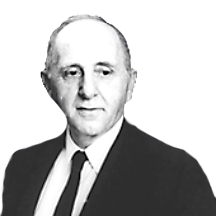
Kuznets Simon
Kuznets was born in Kharkov, Ukraine, in 1901. He emigrated to the United States, and was awarded his doctorate in economics from the University of Columbia in 1926. He was a member of the National Institute for Economic Research and at the same time served as professor of economics at Johns Hopkins and Harvard universities.
Simon Kuznets was awarded the Nobel prize for economics in 1971 “for his empirically founded interpretation of economic growth, which has led to new and deeper insight into the economic and social structure and process of development.”
Kuznets is thought to be one of political economics’ chief historians. He studied economic growth from the middle of the nineteenth century, while revealing the amazing complications of economic periodicity. Kuznets also defined national income and the methods he developed are in use the world over.
When he died in 1985, Kuznets was eulogized by the eminent economist John Kenneth Galbraith, who said, “When we talk about gross national product, national income, their components and the policies leading up to them, we are talking about structures created by Kuznets”.
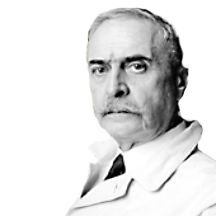
Landteiner Karl
Karl Landsteiner was born in Vienna in 1868. He completed his medical studies in 1891 and studied chemistry in Berlin and Zurich. On completion of his studies, he worked at the Vienna pathological anatomy institute, and later at a hospital in The Hague, Holland. In 1922 he moved to the Rockefeller Institute in New York, where he worked until his death in 1943. Although Landsteiner was born a Jew, he later converted to Catholicism.
The Nobel prize for physiology or medicine was awarded to Karl Landsteiner in 1930, “for his discovery of human blood groups.”
In 1901, Landsteiner discovered the existence of three human blood groups: A, B, and C. He later changed the name of the “C” group to O” and discovered a fourth group, “AB”.
His research showed that blood cells carry chemical markers, a kind of “ID card”, known as agglutinogens, and it appeared that the blood groups are characterized by various combinations of these agglutinogens. This simple principle was employed as the basis for the development of tests for the identification of blood groups.
Landsteiner’s discovery enabled the safe execution of blood transfusions and surgical procedures, and in 1914, with the discovery of blood preservation, the era of the blood bank was opened.
A further contribution by Landsteiner was in the field of immunology. His research on the Polio virus laid the foundations for the later development of the vaccine against infantile paralysis.
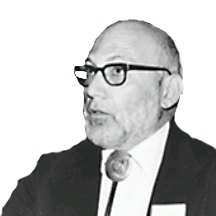
Lederberg Joshua
Joshua Lederberg was born in New Jersey in 1925. He received his doctorate from Yale University, served as Professor of Genetics at the University of Wisconsin, head of the Genetics Department at Stanford University and director of the Kennedy Laboratories for Molecular Biology and Medicine in California.
In 1958 Joshua Lederberg won the Nobel prize in Physiology or Medicine “for his discoveries concerning genetic recombination and the organization of the genetic material of bacteria.”
Until 1946 scientists thought that bacteria could not engage in sexual reproduction, or in other words pass on genetic material. Lederberg and his colleagues carried out an experiment in which, as a result of mixing two e-coli bacteria strains, they obtained a new strain that had characteristics inherited from the two “parent” strains. This experiment verified the existence of genetic recombination in bacteria. Later on Lederberg discovered that the genes of the e-coli bacteria are arranged in a linear structure, analogous to chromosome structure in animal or plant cell nuclei.
Joshua Lederberg’s discoveries opened up a fertile field of research for geneticists, who used bacteria to study the basic mechanisms of inheritance in more developed life systems, such as humans.
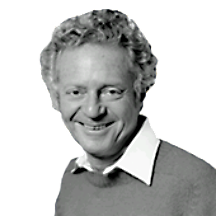
Lederman Leon
Leon Lederman was born in New-York in 1922. He studied chemistry at first, later physics, receiving his doctor degree at Columbia university in 1951. He became a brilliant researcher, responsible for many important discoveries in his field.
Leon Lederman received the 1988 Nobel prize in physics, together with Jack Steinberger and Melvin Schwartz, “For the neutrino beam method and the demonstration of the doublet structure of the leptons through the discovery of the muon neutrino.”
The standard model of particle physics divides the elementary particles into two families: quarks and leptons. Until the end of the 1950’s only three leptons were known: electron, muon and neutrino. The neutrinos can be produced from either electrons or muons, and can turn back to be either of them.
In 1960, scientists assumed the existence of two kinds of neutrinos: one that one that is associated with electrons and the other, which is associated with muons. However, they had much difficulty in establishing an empirical evidence to support their assumption.
In 1961 Lederman and his colleagues executed the neutrino experiment that was appreciated by the Nobel committee. They used a muon originated neutrino beam, produced by high energy collisions in the Brookhaven accelerator. All the neutrinos reverted to being muons, not a single on turned into an electron; this proved that the neutrino observed in this experiment is a different kind of particle – a muon-neutrino.
The differentiation between electron-neutrino and muon-neutrino is of much theoretical importance. The electron and the electron neutrino are considered a “doublet”, two leptons that belong to the same generation. The muon and the moun-neutrino form another “doublet”, belonging to a different generation altogether.
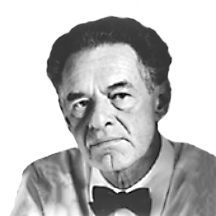
Lipmann Fritz
Fritz Lipmann was born in 1899 in Koenigsberg, Germany, In 1922 he received his medical degree and in 1927 a doctorate in chemistry. From 1927 to 1931, he conducted researches at the Kaiser Willhelm Institute in Berlin, then he went to the Rockefeller Institute in New-York. When Hitler came to power he decided not to return to Germany and joined the Carlsberg Laboratories in Copenhagen, there he began researching the human metabolism.
Lipmann received the 1953 Nobel prize in physiology or medicine, together with Hans Krebs, for his studies on metabolism, especially for his discovery of co-enzyme “a”, which is essential to the production of sterol and protein in the body. Lipmann’s effort was vital, also, to the understanding of the assimilation of carbohydrates and fats.
Fritz Lipmann passed away in 1986. His contributions reflect both skilled technical ability and great theoretical ingenuity.
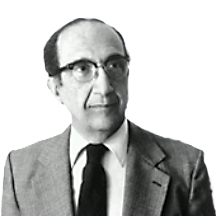
Luria Salvador
Salvador Luria was born in Turin, Italy, in 1912. After receiving his degree in medicine, he moved to Paris where he was engaged in research at the Pasteur Institute until France fell to the Germans in 1940. He then emigrated to the United States and was appointed, in 1959, professor of microbiology at the Massachusetts Institute of Technology (MIT).
In 1969, Salvador Luria was awarded the Nobel prize for medicine and physiology “for his discoveries concerning the replication mechanism and genetic structure of viruses”.
In the 1940’s, Luria and his co-recipient of the Nobel prize, Max Delbruck, conducted a series of experiments on bacteriophages, viruses that attack bacteria. The results of these experiments where an important contribution to the understanding of viral and bacterial genetics, and indicated that DNA was a decisive factor in heredity.
Luria’s later work demonstrated additional genetic processes connected with the transfer of hereditary material between various organisms, thus paving the way for the meteoric rise of genetics in the following decades.
Salvador Luria died in 1991.
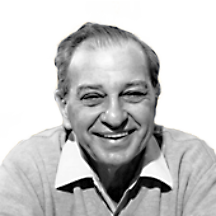
Marcus Rudolph
Rudolph Marcus was born in 1923 in Montreal, Canada. He received his doctorate from McGill University in 1946, and later moved to the United States. He also worked in England and China.
In 1992, Rudolph Marcus was awarded the Nobel prize for Chemistry “for his contributions to the theory of electron transfer reactions in chemical systems”.
Marcus’s work is related to the reduction of oxidation and it enables a deep understanding of many chemical processes such as photosynthesis, the electrical conductivity of polymers and corrosion. Itis conceivable that, in the futurem Marcus’s theory will support the discovery of a method of slowing down chemical reactions, which is impossible at present.
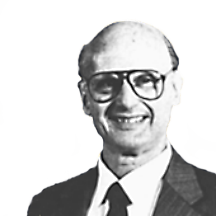
Markowitz Harry
Harry Markowitz was born in 1927 in Chicago. He received his Ph.D. in economics at the University of Chicago and has subsequently combined successful academic and business careers.
In 1990, Harry Markowitz was awarded the Nobel prize in economic sciences, for the development of the portfolio selection theory.
Markowitz’s studies have influenced the entire world of finance and made him a key figure in contemporary investment research.
According to Markowitz, investors should not only select portfolios that maximize expected profit, but should consider the variance of the return in order to protect their investments in a risky and uncertain market.
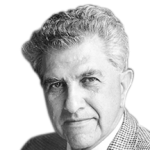
Merton Miller
A genius is someone who is able to – a simple explanation to a complicated issue. How then would you call someone who managed to simplify an economic theory and at the same time make us want to order pizza?
A genius is someone who is able to – a simple explanation to a complicated issue. How then would you call someone who managed to simplify an economic theory and at the same time make us want to order pizza?
Miller claimed that the value of a firm is unaffected by how that firm is financed, much like the size of a pizza is unaffected by the number of slices we divide it to.
He was born in 1923 in Boston to an educated Jewish family and graduated from Harvard university. He taught in Chicago university for over 40 years.
In 1990 he was awarded a Nobel Prize in economy. He died seven years later, leaving hundreds of followers who maintained his heritage: logic, truth – and surprising metaphors about delicious pastries.
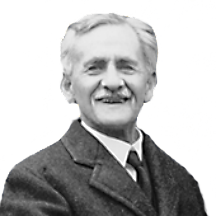
Michelson Albert
Albert Michelson was born in Strelno, Germany in 1852. When he was three years old, his family immigrated to the United States. Subsequently, he studied physics, specializing in the field of optics. Michelson was professor of physics at the Case School of Applied Science in Cleveland, at Clark University and at the University of Chicago. In his later years, he went to California to calculate astronomical measurements. He died in 1931.
In 1907, Albert Michelson was awarded the Nobel Prize in physics “for his optical precision instruments and the spectroscopic and meteorological investigations carried out with their aid.”The best known and most important achievement was the Michelson-Morley experiment of 1887. According to the prevailing opinion of physicists at that time, the speed of light varies in relation to the direction of the earth’s movement. Michelson and his colleague, Edward Morley built an interferometer, an instrument for precise measurement determination. With the interferometer, they were able to prove that the speed of light is constant and does not vary according to the relative movement of the earth.
This discovery posed a difficult dilemma for classical physics. Eighteen years later, the dilemma was solved with the publication of Albert Einstein’s theory of relativity.
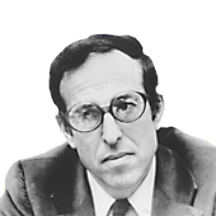
Modigliani Franco
Franco Modigliani was born in 1918 in Rome, Italy. He started studying economics by chance after winning the first prize in a national competition for university students, where he was asked to write an essay about the effects of price control. The Anti-Semitic atmosphere in Italy prior to World War II caused Modigliani to decide to emigrate to USA. In 1944 he received his PhD for Economics. He joined the staff of the University of Illinois, later he moved to the Carnegie Institute of Technology and finally to M.I.T, where he became a professor of economics and finance.
Franco Modigliani was awarded the 1985 Nobel prize “for his pioneering analysis of saving and financial markets”.
Modigliani contributed to established tools for evaluating the value of a company, capital price, the effect of taxes and others. These models marked a milestone in the modern theory of finance.
He developed mathematical formulations of the the Keynesian model. As a neo-Keynesian economist, Franco Modigliani believes in the real effect of money on the economy and that, under certain conditions, an increase of government budget can have a positive effect against economic depression.

Mottelson Benjamin
Benjamin Mottelson was born in Chicago in 1926.
He received the 1975 Nobel prize in physics, together with Aage Bohr and James Rainwater, for the development of a collective nucleus model, which explains the electric quadrupole phenomena, an uneven distribution of electrical charge in the nucleus.

Muller Hermann
Hermann Muller was born in New York in 1890. He studied medicine and later taught at Columbia University and at the University of Texas at Austin. Because of his communist views, he moved to the USSR where he served as a senior geneticist at the Academy of Sciences. He returned to the United States in 1940, and continued his research. He died in 1967.
Hermann Muller was awarded the Nobel prize in physiology or medicine in 1946, “for the discovery of the production of mutations by means of X-ray irradiation.”
The chromosomes that carry our genes transfer a detailed system of hereditary information from parent to child, and also supply the cells with the necessary `instructions’ for reproduction. However, Chemical flaws, mutations, can sometimes occur, and cause dysfunction in the cell. Mutations can also cause genetic defects.
Muller’s research on Drosophila flies showed that exposure to X-rays increased the rate of mutation in cells. A similar phenomenon was found in X-rays technicians and patients treated by them.
Nuclear radiation has a similar effect, and today we know that the use of chemical materials that are not radioactive can also cause the same results.
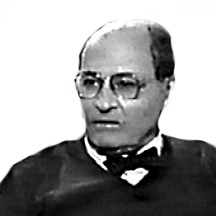
Nathans Daniel
Daniel Nathans was born in 1928 in the State of Delaware. He received his medical degree in 1959 from Washington University in St. Louis. In 1962, he joined the staff of Johns Hopkins University, where he became head of the microbiology department in 1967.
Daniel Nathans, Werner Arber and Hamilton Smith were awarded the 1978 Nobel Prize in Medicine or Physiology for “the discovery of restriction enzymes” and their application to the study of genome structure and for purposes of genetic engineering.
Daniel Nathans was the first to apply these enzymes towards the study of gene organization and the sequence of genes in the chromosome. However, the biggest breakthrough in the application of restrictive enzymes was their use in isolating specific genes and linking them to a bacterial or viral DNA molecule, producing recombinant DNA.
This revolutionary procedure has made it possible to produce the large quantities of enzymes and hormones, like human insulin, that are needed for medical treatment. The basic fundamentals of this research were rapidly translated into many vital uses that had not even been imagined several years prior to Nathans’ work.
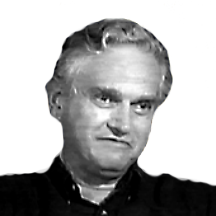
Nirenberg Marshall
Marshall Nirenberg was born in New-York in 1927. Because of his frail health, the family moved to Florida where as a young man, Nirenberg studied biology at the University of Florida. He received his doctorate in biochemistry from the University of Michigan in 1957. From 1960, Nirenberg has been active at the National Institutes of Health.
In 1968, Marshall Nirenberg was awarded the Nobel prize for medicine and physiology “for his interpretation of the genetic code and its function in protein synthesis”.
Nirenberg studied the assumption that RNA was responsible for construction of protein from amino acids, and, in a 1961 experiment on synthetic RNA, he succeeded in producing a specific protein. In the wake of this pioneering discovery, he found that the genetic code was based on four “building blocks” called nucleotides. These blocks combine in triplets to create a codon, that codes for a specific amino acid in the synthesis of the protein.
After much laborious work, Nirenberg succeeded in deciphering the codons describing all twenty amino acids, thus providing science with a new language for understanding the secrets of life.
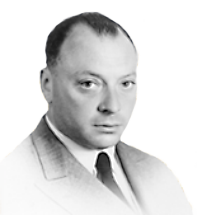
Pauli Wolfgang
Wolfgang Pauli was born in 1900 in Vienna, Austria. In 1921 he received a Ph.D. in physics in Munich and worked with the well known physicists Max Born, James Franck and Niels Bohr, who introduced him to the field of sub-atomic particles and Quantum Mechanics. Later he served as Professor of Physics in Hamburg and Switzerland. During the second world war he worked at the Institute for Advanced Study in Princeton, then returned to Zurich, where he passed away in 1958.
Wolfgang Pauli was awarded the 1945 Nobel prize in Physics “For the discovery of the Exclusion Principle, also called the Pauli Principle.” The Exclusion Principle states that in a multi-electron atom there can be only one electron in each quantum state.
Pauli also discovered that the electron has an innate characteristic that was later called spin. He thereby increased the number of parameters that describe the electron’s state to four: energy, angular momentum, spin and the sum of the spin and the momentum. According to Pauli’s Exclusion Principle, this set of four numbers can characterize only one electron in the atom.
Pauli made an additional important contribution to the field of nuclear physics. In 1930 he postulated the existence of the neutrino, an elusive elementary particle that was empirically discovered only 25 years later.
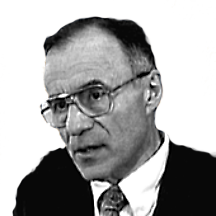
Penzias Arno
Arno Penzias was born in 1933 in Munich, Germany. In 1939 his family emigrated to the United States.
Arno Penzias was awarded the Nobel prize for physics in 1978, Together with Robert Wilson, “for their discovery of cosmic background radiation”, the echoes of the creation of the universe in the `big bang’, eighteen billion years ago.
Penzias’ discoveries constituted an empirical confirmation of the ‘big bang’ theory and turned it into the central model for describing the history of the universe.
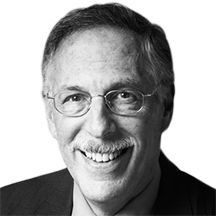
Peter Diamond
Imagine a world in which unemployed can go to the “Jobmart”, pull a job from one of the shelves, check out and simply start working the next day. What a joy!
Now picture this: world peace, each and every one of us is fulfilled, satisfied, find the perfect spouse, and live in prosperity with no worries or pain, no troubles nor diseases until their peaceful death at 120 years old.
This is exactly the imagination’s failure. Should all this come true – we wouldn’t need imagination at all, won’t we?
On the other hand, imagination generates metaphors. “Jobmart”, for example, is a wonderful metaphor, that helps us understand why Prof. Peter Diamond was awarded the Nobel Prize in Economic Sciences in 2010.
Here’s the main idea: assuming no money actually grows on the trees, you are not related to the queen of England and you never were lucky enough to win the lottery – you most likely had at least once to look for a job. Diamond defined the labor market search as a category in finances called “searching market”. Firms do not really shop for employees on the shelves of supermarkets, not do employees shop for positions this way. It takes a long complicated expensive procedure in which one has to find the other.
Diamond was born to a Jewish family whose ancestors came from Eastern Europe to the U.S.A. in the late 19th century. He developed models depicting the processes of labor searching, and decisions making of both employers and employees. The models attempt to answer questions such as why unemployment reaches a certain level at a specific period. How does government policy, such as the distribution of benefits or social insurance affect levels of unemployment?
So, it you are looking for a job, take a look at Diamond’s models – they’re diamonds forever.
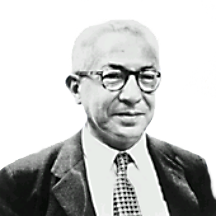
Rabi
Isidor Rabi was born in 1898 in Rymanow, then Austro-Hungary, to-day Poland. When he was one year old, his family immigrated to the United States. His parents were extremely orthodox and hoped that he would become ordained as a rabbi, but he showed an interest in technology and science.
He began to study chemistry and later physics, and in 1928 was awarded his doctorate from Columbia University. After receiving his doctorate, he left for Europe to work with some of the world’s greatest physicists who were developing the quantum theory. He later returned to Columbia University and in 1940 was elected to the American Academy of Science.
During World War Two, Rabi turned down an invitation to participate in the project for the development of the atomic bomb, and after the war he was active in support of civilian supervision of nuclear power.
Isidor Rabi was awarded the 1944 Nobel prize in physics, “For his resonance method for recording the magnetic properties of atomic nuclei”, a method that provided valuable information for research on the detection of magnetic infection of crystals. This method is also used in medicine and biology for the identification of materials in tissues.
When he was awarded the Nobel prize, it was said that he had “established radio contact with the sub-nuclear world“.
Isidor Rabi passed away in 1988.
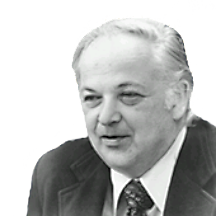
Richter Burton
Burton Richter was born in New-York in 1931.
He received the 1976 Nobel prize in physics, together with Samuel Ting, for an experiment he conducted, in which a heavy elementary particle of a new kind had been discovered.
The discovery of “Psi” confirmed Glashow’s theory on the existence of a “c” quark, and gave empirical evidence to support the standard model of elementary particles.
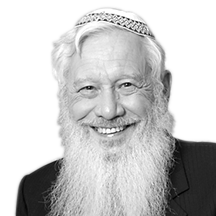
Robert Aumann
What would you do if you were in Abraham’s place? God has just ordered you to bind and kill your only son. You’re facing quite a tough dilemma, right? If you disobey, you defy God, but if you do obey, you will live a lifetime of guilt. OY.
If Prof. Aumann, an expert in strategies and decisions making, who was awarded the Nobel Prize in economic sciences in 2005, was there advising Abraham, he would probably say to him “go for it”, because it is likely that if you are willing to take the challenge, you won’t actually have to take it after all. Paradoxically, it was Abraham’s determination to kill Isaac that saved Isaac.
The paradox is also demonstrated in the “Blackmailer Experiment”: Two men are placed into a room with a suitcase containing $100,000 of cash. The owner of the suitcase offers them the following: “I’ll give you all the money in the suitcase, but only on the condition that you negotiate and reach an agreement on its division.”
The rational person to his friends: “you take half the amount, I’ll take the other half, and each of us will go away with $50,000.” To his surprise, he refuses and demands to take 90,000$. Finally he realizes that the only way for him to leave the room with any money is to surrender to the blackmail.
The blackmailer paradox is just but one principle of the game theory, a field in mathematics dealing with rational behavior of many factors and interests.
Prof. Israel Aumann was born in Germany in 1938. His family escaped Nazi Germany at the last moment. He is a religious man, who believes that the game theory can help us settle almost any conflict: matchmaking, environment, and even the Israeli-Palestinian war. What an optimist bright man!
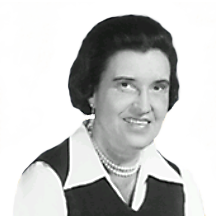
Rosalyn Yalow
Rosalyn Yalow was born in New York in 1921. In 1945, she earned her doctoral degree in physics. She initially began working as a consultant in the radiotherapy department of the Veterans Administration Hospital in the Bronx, where she set up the first radioisotope laboratory in the United States. In 1970, she was appointed head of the department of nuclear-medicine and simultaneously served as a research professor at Mt. Sinai Hospital.
In 1950, Yalow began to do research, together with Salomon Berson. Through the use of radioisotopes, they developed methods for measuring blood volume and the dispersion of serum-proteins in body tissues, as well as for the diagnosis of thyroid gland diseases.
In 1977, Rosalyn Yalow received the Nobel Prize in physiology or medicine, “for the development of radioimmunoassays of peptide hormones.” Her research partner, Salomon Berson died prior to that time, and therefore did not share it with her.
The radioimmunoassay method measures precisely the amount of hormones and other natural substances that are found in very low concentrations in the blood. This method is used for the early detection of various viral diseases, certain types of cancer and as a diagnostic tool for identifying blood diseases. It is also used by blood banks for testing donor blood.
Rosalyn Yalow’s achievements have opened up hitherto unexplored areas of study and brought about new approaches in science and medicine.
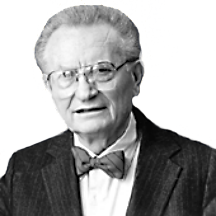
Samuelson Paul
Paul Samuelson was born in 1915 in the State of Indiana. He studied at Harvard University and thereafter at the Massachusetts Institute of Technology, where he became a research lecturer from 1940. In 1948/49, he headed a presidential task force on American public welfare and also served as economic advisor to presidents Kennedy and Johnson.
In 1970, Paul Samuelson was awarded the Nobel prize for economic sciences “for the scientific work through which he has developed static and dynamic economic theory and actively contributed to raising the level of analysis in economic science”.
As a theoretician, Samuelson was involved in all branches of economics. The first of his many publications was the book “Foundations of Economic Analysis” in which he presented economics in the form of mathematical models. He was also a prominent and talented educator and his book “Economics” has been translated into 80 languages and has reached millions of readers all over the world.
Paul Samuelson favors a reasonable amount of government intervention in the economic marketplace, but feels it should not lead to disruptions or overly extensive limitations. He believes that the government can best influence the economic climate through its budget and monetary policies.
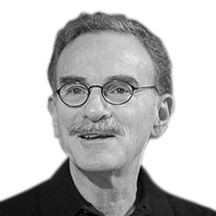
Schekman Randy
Did you ever stand near the luggage conveyor at the airport, waiting for your suitcase, and waiting… and yet still waiting? This is so annoying, and trying to locate the lost luggage within that complex system can be very frustrating.
Now imagine that instead of suits, dresses, and your favorite boots, your suitcase contains emotions, memories, hopes and yearnings.
Prof. Randy Schekman studied cell biology and was awarded the Nobel prize for physiology and medicine in 2013, for deciphering the mechanism in which “suitcases” travel – inside our body.
The human body consists of trillions of molecules, transferred between cells in small portions called vesicles, that carry all the emotional and cognitive and physiological data. The direction and timing of the vesicles determine what will we think and fell, where will we turn to and exactly in which manner our heart is going to break when “he/she” enters the room.
Schekman was fascinated by the way in which cells organize the molecular traffic and studies the ways in which the “suitcases” move. He discovered three types of genes responsible for the transportation system of the cell. His discovery was a breakthrough in molecular biology and led to significant progress in curing diabetes and Parkinson.
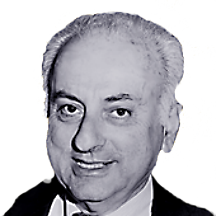
Schwartz Melvin
Melvin Schwartz was born in New-York in 1932. He studied physics at Columbia University, received his Ph.d. in 1958 and joined the staff as a notable lecturer and researcher.
Melvin Schwartz received the 1988 Nobel prize in physics, together with Leon Lederman and Jack Steinberger, “For the neutrino beam method and the demonstration of the doublet structure of the leptons, through the discovery of the muon neutrino.”
The standard model of particle physics divides the elementary particles into two families: quarks and leptons. Until the end of the 1950’s only three leptons were known: electron, muon and neutrino. The neutrinos can be produced from either electrons or muons, and can turn back to be either one.
In 1960, scientists assumed the existence of two kinds of neutrinos: one that is associated with electrons and the other, which is associated with muons. However, they had much difficulty in establishing an empirical evidence to support their assumption.
In 1961 Schwartz and his colleagues executed the neutrino experiment that won them the Nobel prize. They used a muon originated neutrino beam, produced by high energy collisions in the Brookhaven accelerator. All the neutrinos reverted to being muons, not a single on turned into an electron; this proved that the neutrino observed in this experiment is a different kind of particle – a muon-neutrino.
The differentiation between electron-neutrino and muon-neutrino is of much theoretical importance. The electron and the electron neutrino are considered a “doublet”, two leptons that belong to the same generation. The muon and the moun-neutrino form another “doublet”, belonging to a different generation altogether.
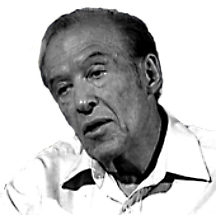
Schwinger Julian
Julian Schwinger was born in 1918 in the United States.
He received the 1965 Nobel prize in physics, together with Richard Feynman and Sin-Itiro Tomonaga, “for their fundamental work in quantum electrodynamics”, which had a profound influence on the physics of elementary particles.
Julian Schwinger passed away in 1994.
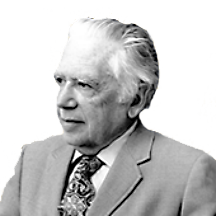
Segre Emilio
Emilio Segre was born in Tivoli, Italy, in 1905. He began his engineering studies in Rome and later moved over to physics, which he studied under Nobel laureate Enrico Fermi .He was awarded his doctorate in 1928. He taught at Rome University and was appointed Head of the Physics Department at the University of Palermo in 1936.
In 1938, in the wake of the anti-Semitic regulations in the civil service enacted by the fascist government, Segre emigrated to the United States, where he joined the University of California at Berkeley.
He became an American citizen and participated in the American effort to build the atomic bomb. After his retirement in 1978, he returned to Rome University where he died in 1989.
In 1959, Emilio Segre was awarded the Nobel prize for physics, together with Owen Chamberlain, “for their discovery of the antiproton.”
The proton is a positively charged particle that is found in varying numbers in atomic nuclei. The antiproton is a similar particle, but is negatively charged. The disparity between their charges turns every encounter into a dramatic event in which they nullify one another .
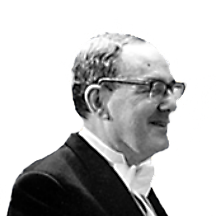
Simon Herbert
Herbert Simon was born in the United States in 1916.
He was awarded the Nobel prize for economics in 1978, “for his research in the field of the decision-making processes in economic organizations.”
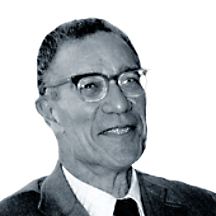
Solow Robert
Robert Solow was born in Brooklyn, New-York, in 1924. He received his Ph.D in economics at Harvard University in 1951 and subsequently joined the Massachusetts Institute of Technology.
Robert Solow was awarded the 1987 Nobel prize in economic sciences, “For his contributions to the theory of economic growth.”
He developed a model that combines capital and labor as determinants of market growth. This analysis, together with his study on capital structure and vitality, have become indispensable in contemporary economics.
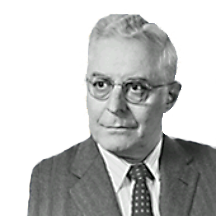
Stein William
William Stein was born in New York in 1911. He studied chemistry and his research led him to develop ways of identifying amino acids and of localizing structures.
In 1972, he was awarded the Nobel prize in chemistry, together with Stanford Moore, “for their contribution to the understanding of the connection between the chemical structure and catalytic activity of the active center of the ribonuclease molecule.”
William Stein died in 1980.
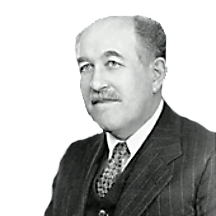
Stern Otto
.Otto Stern was born in 1888 in Sorau, which was then part of Germany. With the rise of the Nazis, he emigrated to the United States where he continued his research.
In 1943 he was awarded the Nobel prize in physics for his work with the molecular beam, in which the magnetic moment of an ion current was examined and found to split into only two directions, which contradicted the classical physics assumption that predicted uniform distribution.
The `Stern-Gerlach’ experiment substantiated the projection of quantum mechanics, which at the time was still in its infancy, and demonstrated the limitations of classical physics.
Otto Stern passed away in 1969.
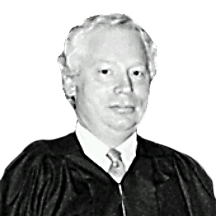
Steven Weinberg
Steven Weinberg was born in 1933 in New-York.
In 1979, he received the Nobel prize in physics, together with Sheldon Glashow and Abdus-Salam, “For their contributions to the theory of the unified weak and electromagnetic interaction between elementary particles, including inter-alia the prediction of the weak neutral current.”
The three scientists reduced the number of interactions by which physics describes the universe from four to three and in so doing advanced science toward its ultimate goal: the creation of a unified theory of all forces acting in the cosmos.
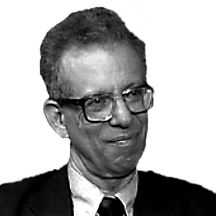
Temin Martin Howard
Howard Temin was born in Philadelphia in 1934. At the age of 25, he received a Ph.D. at the California Institute of Technology. He taught and conducted research, and in 1969, became a professor of oncology at the University of Wisconsin.
In 1975, in conjunction with David Baltimore and Renato Dulbecco, Howard Temin was awarded the Nobel Prize in Physiology or Medicine for “their discoveries concerning the interaction between tumor viruses and the genetic material of the cell.”
The greatest discovery of the three scientists was their explanation of the mechanism that changes a normal cell into a cancerous one when infected by a tumor virus. They showed that the virus encodes its genetic information into the genome of the normal cell and exploits the cell to replicate viral molecules. This strategy is particularly effective because it does not destroy the host cell. Quite to the contrary, the cell is prompted to multiply and simultaneously produce additional viruses.
Temin and Baltimore proved that viruses are capable of creating DNA from an RNA template. This discovery ran counter to the prevailing dogma among scientists at that time.
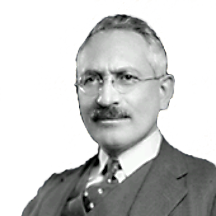
Waksman Selman Abraham
Selman Waksman was born in the Ukraine in 1888. In 1911 he emigrated to the United States, where he specialized in soil microbiology and, in 1918, received his PhD at the University of Berkeley.
In 1932, Waksman was asked by the American National Association Against Tuberculosis to study the destruction of the tubercle bacillus in the soil. Waksman, suspecting certain active bacteria and fungi, systematically and painstakingly, examined some thousands micro-organism, until he was able to isolate and purify streptomicyn in 1940.
This substance proved potent in destroying strains of bacteria resistant to sulfur or penicillin. For his discovery, Selman Waksman was awarded the 1952 Nobel prize in physiology and medicine.”
Selman Waksman, whose achievements saved countless lives, died in 1973.
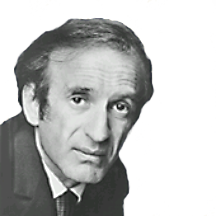
Wiesel Elie
Elie Wiesel was born in the town of Sighet, Romania, in 1928. When he was 15 years old, the Wiesel family was sent to a German concentration camp. Both parents, as well as a younger sister, perished in the camps, but Wiesel and two other sisters managed to survive.
At the close of World War II, Elie Wiesel went to France as a refugee and began studying at the Sorbonne University in Paris. In 1948, at the age of 19, he arrived in Israel as a military correspondent for a French newspaper, in order to cover the War of Independence.
He went on to become a foreign correspondent for the Israeli daily “Yedioth Ahronoth” and thereafter moved to New York, where he joined the staff of the Yiddish paper “Forverts”. Wiesel served as professor of Jewish Studies at New York university and from 1976, professor of humanities at Boston University.
After a self-imposed, ten year period of silence, Wiesel described his experience as a youth in a concentration camp in his book “Night”, published in 1956. The book first appeared in Yiddish, but was later translated into many other languages. Since then, he has written another 30 books and gained a worldwide reputation.
Elie Wiesel was awarded the Nobel Peace Prize in 1986. According to the Prize committee, “Wiesel has given us not only an eyewitness account of what happened, but also an analysis of the evil powers which lay behind the events. His main concern is the question of what measures we can take to prevent a recurrence of these events.”
Elie Wiesel is a fighter for human rights. His name has been connected with humanitarian causes all over the world, such as: the struggle of Soviet Jewry, the Indians in Nicaragua, the civil war in the former Yugoslavia, the Kurds, victims of Apartheid in South Africa and famine victims in Africa. Many of the numerous articles he has published are concerned with issues of oppression, and as a lecturer, he is in demand worldwide. Furthermore, Wiesel has served as advisor to presidents of the United States and France and to groups that deal with universal, ethical issues.
In his writing and his work, Elie Wiesel has not attempted to garner pity for the victims or the survivors of the holocaust. Rather, he has tried to combat the apathy to evil that makes us accessories to crimes against humanity. He wants to awaken the conscience of each of us. As he once said, “You can get out of Auschwitz, but Auschwitz can never get out of you.”
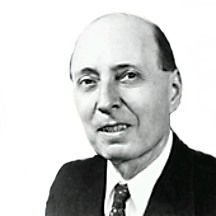
Wigner Eugene
Eugene Wigner was born in Budapest in 1902. In 1925 he received his doctorate degree in engineering from the University of Berlin and in 1930 he immigrated to the United States, where he took part in theoretical nuclear research at Princeton University. In 1942, Wigner joined the Manhattan project, set up by president Roosevelt to produce an atom bomb.
After the Second World War, Wigner was in charge of research and development, under the atomic energy commission. Wigner often expressed his disappointment that atomic energy was used mainly for war, rather then for peace.
Eugene Wigner received the 1963 Nobel prize in physics, “For his contributions to the theory of the atomic nucleus and the elementary particles, particularly through the discovery and application of fundamental symmetry principles.”
Wigner made a major contribution to science by introducing symmetry laws and mathematical group theory into nuclear and particle physics.
In so doing, he turned some of the most abstract mathematical concepts into useful tools of contemporary physics.
His work enables one to predict the probability of nuclear reactions, and has been of great importance to nuclear research.
Eugene Wigner passed away in 1995.

free text
Select a Nobel category:
- Chemistry
- Economics
- Literature
- Medicine
- Peace
- Physics
Select first letter of winner's name:
- A
- B
- C
- D
- E
- F
- G
- H
- I
- J
- K
- L
- M
- N
- O
- P
- Q
- R
- S
- T
- U
- V
- W
- X
- Y
- Z
Search Results
Found 0 Results
No search results

region on map
